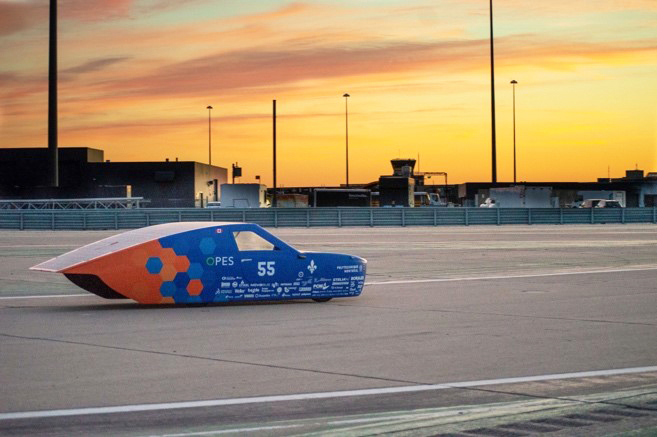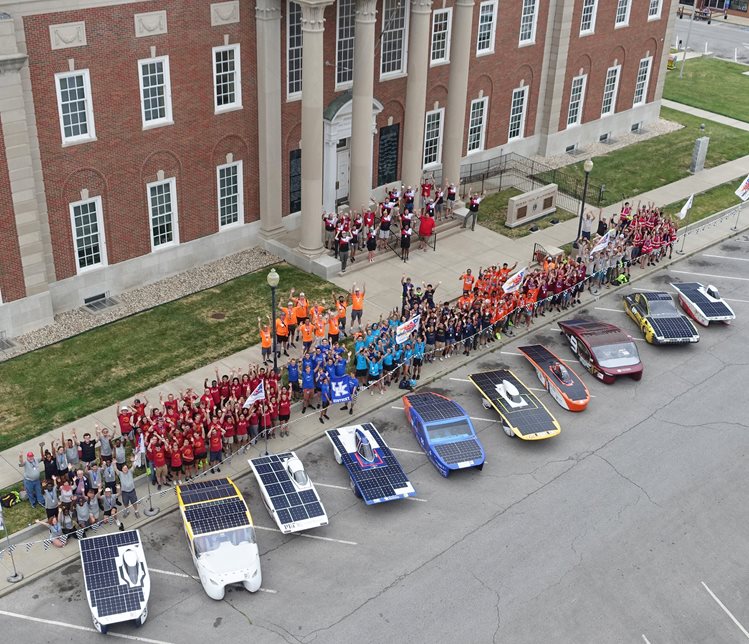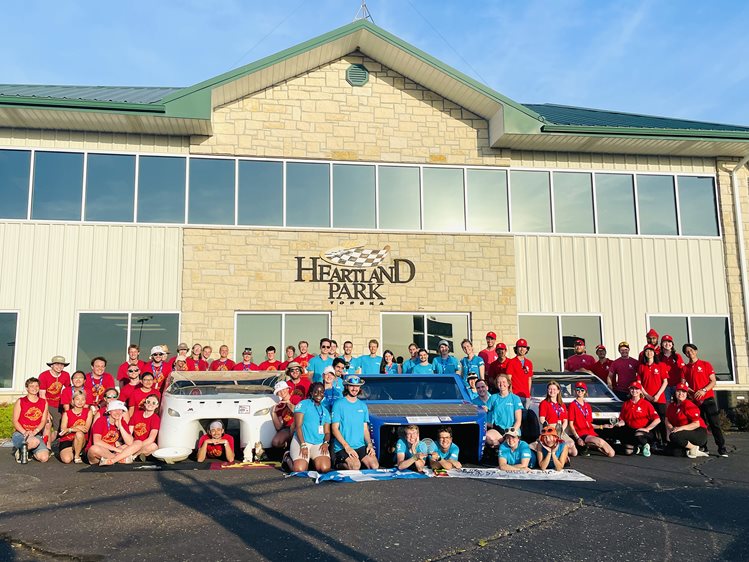 With a top speed of 110 kph and a range of as much as 700 km, Esteban, the solar-powered automobile from Polytechnique Montréal, is taking top honors in global competitions like the Formula Sun Grand Prix. More importantly, the diverse team of 40 students is demonstrating the possibilities of clean energy and solar technology in transportation.
With a top speed of 110 kph and a range of as much as 700 km, Esteban, the solar-powered automobile from Polytechnique Montréal, is taking top honors in global competitions like the Formula Sun Grand Prix. More importantly, the diverse team of 40 students is demonstrating the possibilities of clean energy and solar technology in transportation.
A Passion for Solar Power
For more than 25 years, succeeding teams of students at Polytechnique Montréal have come together to work on the design, construction, financing, and operation of solar-powered automobiles. The team is named after an anime that was popular in Québec in which there was a condor that flew with the power of the sun, and Esteban was the name of the main character. The team’s series of Esteban vehicles have won acclaim for their superior efficiency, weight, and aerodynamics. Along the way, the team has taken first prize in the 2018 and 2019 Formula Sun Grand Prix and was among the top finishers at American Solar Challenge competitions.

Today, Esteban 10 — the team’s first two-seater — can reach speeds of 110 kph and, at an average speed of 70 kph, cover distances of up to 700 km. Those achievements are courtesy of a multidisciplinary team comprised of dozens of mechanical and electrical engineers, software and computer experts, and an operations and business team — all of whom share a passion for green energy and showing how the “car of the future” is close to becoming the “car of today.”
Customized Electronics Integrated with Digi XBee
Computer software students Henri Larocque and Victor Gilbert, co-directors of the electrical team, lead 23 classmates in designing the Esteban’s sophisticated electronics that form the heart of the solar-powered car. “We make all of our own PCBs and design our own modules,” Larocque said, “and we solder them by hand. Then we produce all of the code for them. Some control the battery pack, and others control the solar panels and other subsystems of the car.”
All of these PCBs and modules are connected through a Controller Area Network bus (CAN bus) that aggregates the data they generate. When it comes to transmitting that data, the Esteban team relies on both cellular and RF connections for the flexibility it needs. Some data goes to the Polytechnique Montréal team riding in a “chase car” behind the Esteban. Other data goes straight to a team server on campus back in Montréal.
In most cases, including race routes that take the vehicle out of cellular range, the team relies on a Digi XBee® module that sits on one of its custom-designed boards. Digi XBee-PRO 900HP modules provide best-in-class range wireless connectivity to devices. Supporting RF line-of-sight ranges up to 28 miles (with high-gain antennas), and data rates of up to 200 Kbps, these modules are ideal for extended-range applications requiring increased data throughput.
For cellular connections, the car can also transmit data through a Digi XBee 3 Global LTE Cat 1 smart modem back to the team server. Digi XBee 3 offers a fast and easy way to integrate cellular connectivity into the Esteban vehicle by quickly enabling wireless connectivity and easy-to-add functionality. Building on industry-leading technology, pre-certified Digi XBee 3 Global LTE Cat 1 modules offer the flexibility to switch between multiple frequencies and wireless protocols as needed.
“We can use that RF component if the chase car is within 100-110 meters of the Esteban,” said Gilbert. “That’s our primary connection. We use the cellular connection for redundancy. The added benefit is that the LTE connection gives us timestamps to associate with the data — that’s really helpful.
“The Esteban team has existed for many years, so we have a lot of knowledge and experience that gets passed down from year to year — which makes it even easier to program the XBee modules. With Digi, we’ve never lost a connection.”

Staying on Top of a Fast-Moving Situation
Whether it’s test drives or in the heat of competition, the Esteban team is constantly monitoring all aspects of vehicle performance. “When the vehicle is in motion, we’re looking at a variety of important metrics,” said Larocque, “including battery temperature, vehicle speed, remaining charge, and how much power — in watts — is being converted from the sun. We’re using this data to solve any problems and stay on top of situations as they arise, especially during races. Then, later, we analyze the data to see if there are longer-term improvements we can make. It’s a really fun challenge.”
What’s even more appealing to the team is that their efforts aren’t just abstract theories and academic papers — they’re building the future.
“It’s really cool, said Gilbert. “We’re making functional cars and showing that clean energy is feasible for transportation — not in the future, but right now. Already, our vehicle can reach a speed of 110 kph and travel up to 700 km using solar power alone. There’s still a ways to go, but we’re helping show the way to future of commercial solar cars.”
Connect with Digi
Seeking next-generation solutions and support? Here are some next steps: